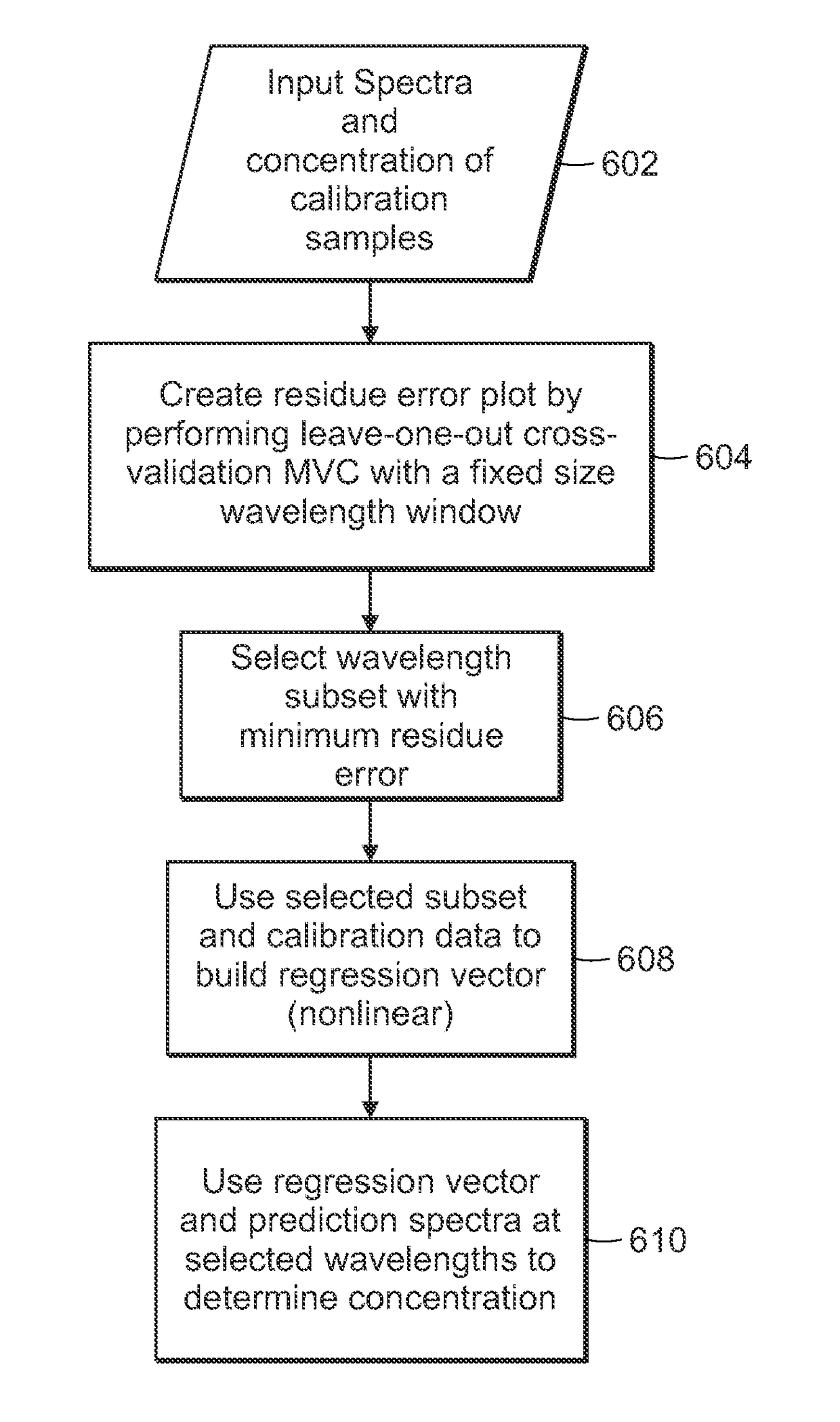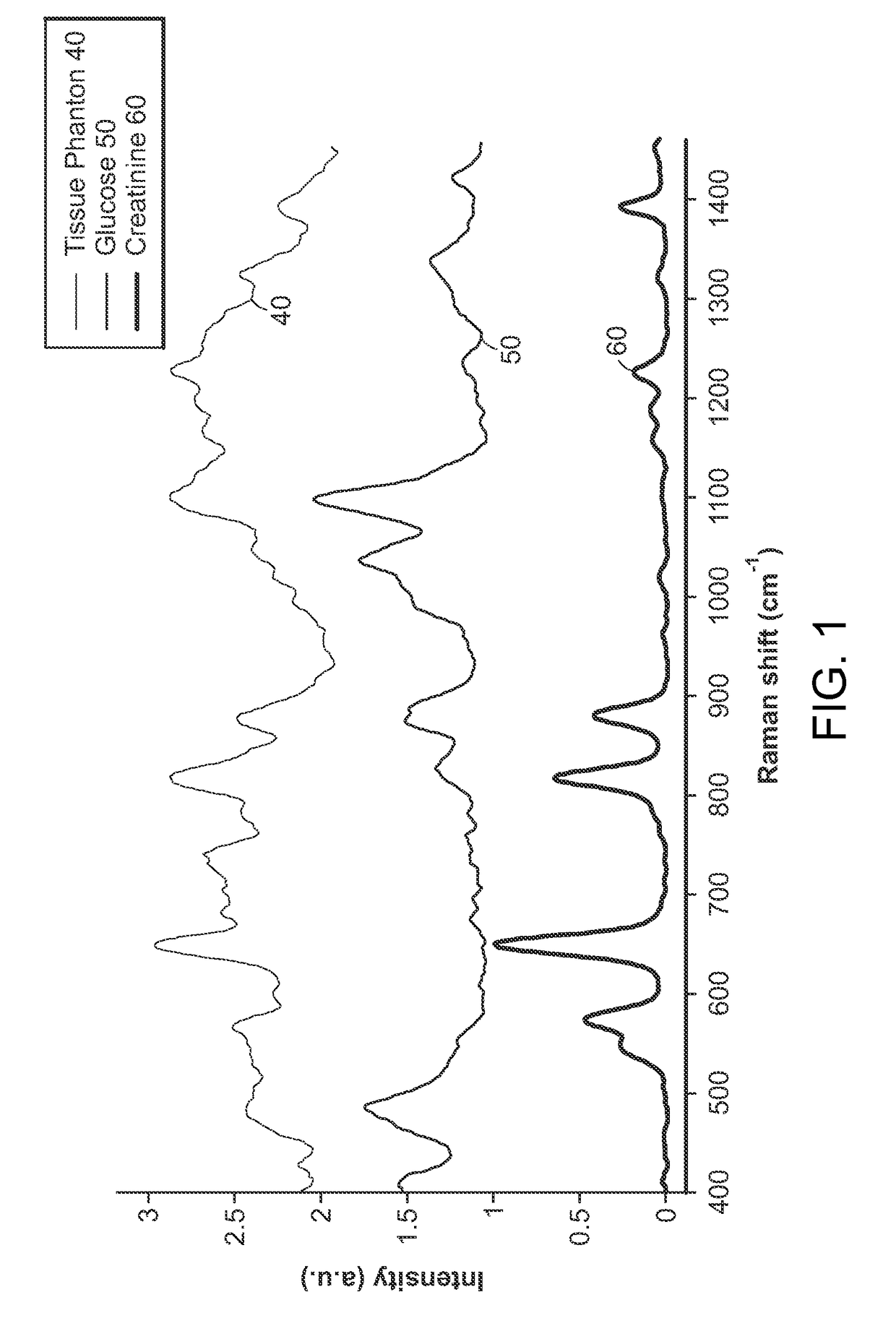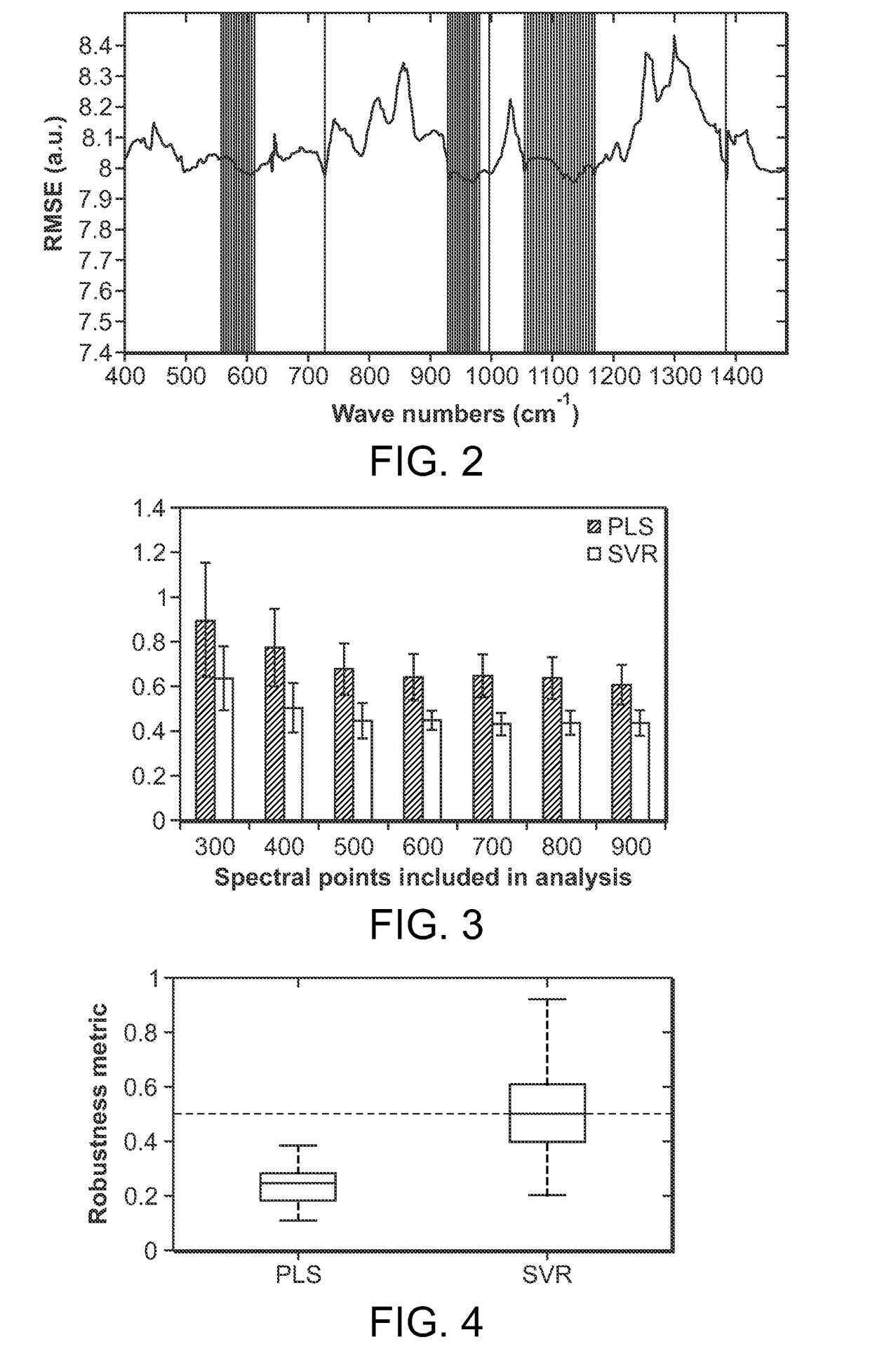Portable raman diagnostic system
a diagnostic system and portable technology, applied in the field of portable raman diagnostic systems, can solve the problems of affecting the accuracy of raman diagnostics, so as to reduce the size and weight
- Summary
- Abstract
- Description
- Claims
- Application Information
AI Technical Summary
Benefits of technology
Problems solved by technology
Method used
Image
Examples
Embodiment Construction
[0050]The present invention relates to portable Raman diagnostic systems utilizing wavelength selection which significantly refine the performance of the multivariate calibration techniques. However, the addition of uninformative spectral regions give rise to more loading vectors / principal components, which tend to incorporate irrelevant sources of variance and noise. An important consideration then is how many and which of the spectral bands (also known as wavelength intervals) facilitate accurate measurement. In other words, as only small portions of the full spectrum contain useful Raman features, it is important to select the appropriate wavelength intervals. Clearly, such selection is also dependent on the rest of the constituents in the sample being measured, because of the resultant spectral overlap which may be observed in certain regions.
[0051]Although existing wavelength selection methods can work in conjunction with any calibration method, such as ordinary least squares (...
PUM
| Property | Measurement | Unit |
|---|---|---|
| weight | aaaaa | aaaaa |
| weight | aaaaa | aaaaa |
| weight | aaaaa | aaaaa |
Abstract
Description
Claims
Application Information
 Login to View More
Login to View More - R&D
- Intellectual Property
- Life Sciences
- Materials
- Tech Scout
- Unparalleled Data Quality
- Higher Quality Content
- 60% Fewer Hallucinations
Browse by: Latest US Patents, China's latest patents, Technical Efficacy Thesaurus, Application Domain, Technology Topic, Popular Technical Reports.
© 2025 PatSnap. All rights reserved.Legal|Privacy policy|Modern Slavery Act Transparency Statement|Sitemap|About US| Contact US: help@patsnap.com



